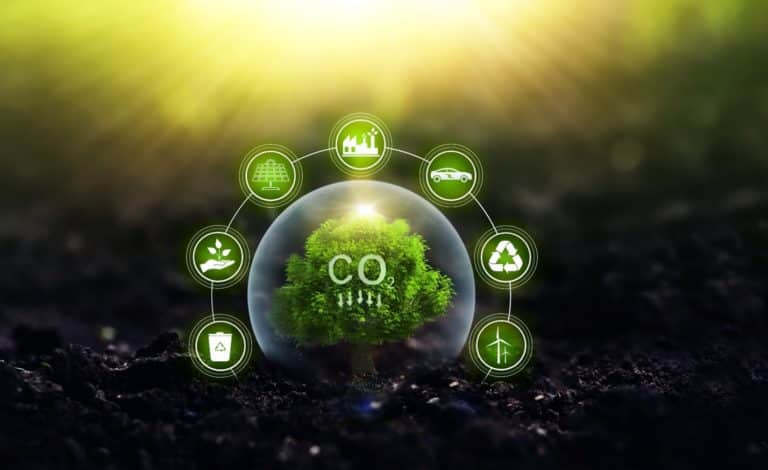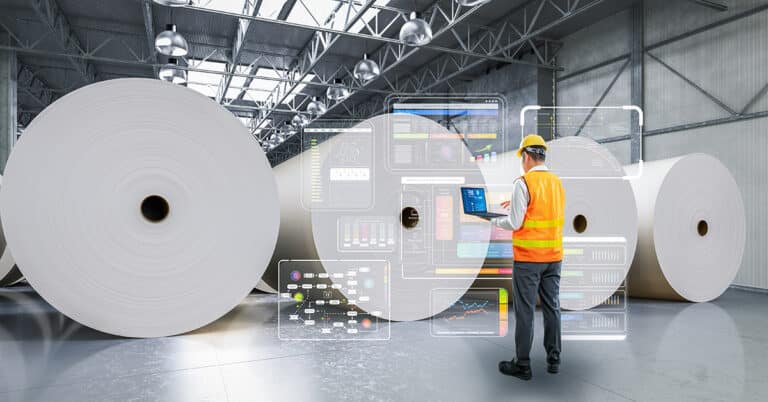The “green movement” is taking a stronger foothold than ever, with manufacturers playing a significant role in green, or eco-friendly, innovation, advances, processes and technology. As manufacturers continue to face down a historic confluence of challenges — supply chain issues, rising costs, worker hiring and retention, and more — green practices are proving to be effective in addressing and overcoming these difficulties.
As interest in more eco-friendly approaches grows, manufacturers who adopt green practices are positioning themselves for success in the coming years and beyond. Read on to learn the specifics of what green manufacturing is, what the green factory entails and what benefits green manufacturers can gain from implementing these methods.
Green manufacturing means that a facility or organization has adopted an eco-friendly approach to its processes and practices, with the goal of reducing emissions and carbon footprint while increasing sustainability. The primary outcomes of the green factory are intended to be a smaller impact on the environment and natural resources, with secondary benefits including cost savings, employee satisfaction, a positive reputation and more. We will discuss each of these benefits in greater detail below.
Ways to “go green” in manufacturing
There are several ways to “go green” in the pursuit of becoming an eco-friendly factory.
Boost operational efficiency
Automation is one of the most effective ways to immediately increase operational efficiency, increasing throughput and productivity while getting the most out of resources and energy usage. The Industrial Internet of Things (IIoT) is the key driver of automation in today’s manufacturing landscape, drawing on a connected network of equipment, industrial sensors and machine health monitoring systems to collect and communicate data about equipment performance, enabling more effective and efficient maintenance and operations.
Beyond sensors, IIoT incorporates artificial intelligence (AI), machine learning (ML) and immersive technology to improve efficiency, enhance safety and reduce or eliminate wasted resources.
Utilize renewable energy
The options for renewable energy usage are vast, including solar power, wind power, hydro power and more. While the upfront costs for this infrastructure may be high, the organization will typically be able to forecast the length of time until the investment pays itself back with reasonable accuracy. Beyond cost benefits, increasing the use of renewables can have a significant positive impact on the environment, creating a strong foundation for a truly green facility.
One creative way in which some facilities engage in renewable energy use is through recovering and exchanging different waste materials from manufacturing processes to provide energy or raw material for other processes.
Pollution reduction
Renewable energy is one way to reduce the amount of pollution that a facility emits. Other ways include recovery and reclamation of raw material waste, increased recycling and implementation of new technology to reduce emissions. Effective, proactive maintenance (such as predictive maintenance) can also help reduce pollution by ensuring that equipment is operating correctly and efficiently.
Natural resource conservation engagements

In many manufacturing scenarios, it may prove difficult or impossible to use renewable energy, or to implement material reclamation and reuse practices. Even if manufacturers are unable to- enact any of the above changes, they can still take an eco-conscious stance by supporting and investing in the conversation of natural resources in a meaningful, material way.
Waste reduction
Many green manufacturing best practices are focused on reducing waste and improving efficiency. Examples of these lean manufacturing techniques include predictive maintenance achieved through machine health monitoring and proper planning to prevent idle time. These not only reduce wasted time, effort and materials, but they also have the side effect of making your operations more eco-friendly.
Water conservation
Conserving water is an important element of many green manufacturing processes. Techniques can range from adjusting the amount of water used in the machining process by misting lubricants to reusing raw process water in certain processes rather than fresh water. Employing these methods help reduce your operations’ impact on natural resources, and they also can help lower your costs.
Benefits of green manufacturing
The benefits of green manufacturing for the business itself are many. These include:
- Cost savings: Green manufacturing practices will almost always yield lower costs, either immediately or, more commonly, over time. Areas where costs can be reduced include:
- Lower energy usage, once the initial renewable energy infrastructure cost is offset
- Reduced material costs when raw material waste is reclaimed and reused
- Lower maintenance costs when a more proactive, predictive maintenance strategy is enacted
- Public relations: Manufacturers that make a meaningful commitment to eco-friendly practices — and take the right steps to back it up — are well-positioned to be at the vanguard of manufacturing in the coming years and decades, when green processes will become increasingly critical. Organizations that are viewed as innovators and thought leaders gain renown and the increased business opportunities that come with it.
- Improved employee attitude: Attracting and retaining a new generation of skilled workers remains one of the most difficult challenges facing manufacturers today. Young workers are often just as concerned with their own personal values as they are with the details of the job itself. Manufacturers with an eco-conscious reputation are increasingly well-positioned to attract the next generation of manufacturing workforce employees.
- Implementation of latest technologies: A knock-on benefit of committing to green manufacturing means that often, you are simultaneously investing in the latest, most efficient and sustainable technology available. Smart manufacturing trends indicate that manufacturers can increasingly benefit from this technology, whether with the specific intention of “going green” or not. By leading the way, you are able to gain a competitive advantage.
- Shareholder value: ESG — environmental, social and governance — is becoming more and more important for investors. In an increasingly risk-averse economic climate, an organization ignores ESG concerns at its own peril. By engaging in sustainability practices, a manufacturing company can increase investor interest and commitment.
Considerations when implementing green manufacturing
Although there are plenty of ways adopting green manufacturing processes can benefit your business, there also are many considerations you should make before doing so. For instance, many of these changes come with significant upfront costs because they may involve investing in new equipment or learning new techniques. However, the long-term savings they can help you realize go a long way toward providing a return on that investment.
Something else to think about is how you may need to overcome technological barriers. Do the technologies for achieving your green manufacturing goals exist, or will you need to adapt them yourself? You also need to consider scalability and whether these technologies will be capable of growing alongside your business. Finally, there’s the regulatory piece of the puzzle. Meeting all the various environmental standards pertaining to your business may be no small feat, and you may need to go through some lengthy and complex certification processes. Despite these challenges, many manufacturers find going green to be well worth the effort, as it can help them become more efficient and appeal to eco-conscious consumers.
ATS offers the workforce, processes and technologies to bring your maintenance processes up to speed in order to fulfill green practices such as increased efficiency, reduced energy usage and reduced or eliminated downtime — one of the primary drains on resources. With a focus on reducing your costs, maximizing uptime and productivity, and increasing throughput, working with ATS can also help you align with sustainability and green goals. To learn more about our industrial maintenance services, contact us today.






